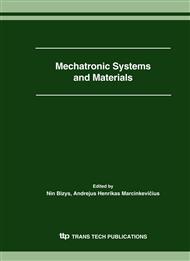p.1
p.7
p.13
p.19
p.25
p.29
p.34
p.39
p.45
A Methodology for Automatically Deriving Simple Electromechanical Equivalent Models from FEM-Models
Abstract:
FEM is a very important tool for getting the numerical solution of many engineering problems. It has been widely used in solving structural, mechanical, heat transfer, and fluid dynamics’ problems as well as problems of other disciplines such as piezoelectricity. Since the complexity of many problems leads to the formation of models of large dimension, which are described with many degrees of freedom, their numeric solution makes for the highest demands. The number of degrees of freedom is often unnecessarily large to represent the structural response in a limited bandwidth and therefore, in such a case, a reduction should be conducted. The systematic reduction of complex FE models on simple electromechanical equivalent circuit models (with less mechanical degrees of freedom) is the subject of this paper. The aim of the work is to make the reduction in such a way that the characteristics of the systems input/output descriptions are approximated within a pre-selectable frequency range with sufficient accuracy. A transducerwedge- system is used as an example for the method, to extract a state space model of the systems piezoelectric input/output description and to derive the parameters of the electromechanical equivalent circuit directly from the modal finite element analysis. In the present paper we describe the general methodology as well as its application to piezoelectric transducers as used in ultrasonic engineering.
Info:
Periodical:
Pages:
1-6
Citation:
Online since:
June 2006
Authors:
Price:
Сopyright:
© 2006 Trans Tech Publications Ltd. All Rights Reserved
Share:
Citation:


